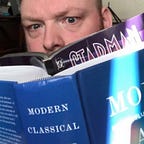The Coldest Reaction ever shows the moment molecules bond
A record supercold chemical reaction has allowed researchers to observe the very moment molecules bond and transform.
Amongst a chaotic mess of lasers the coldest known chemical reaction — one with temperatures millions of times colder than interstellar space — has been achieved by Kang-Kuen Ni of the Ni Group. In the process, Ni and her team have observed the very moment that molecules bond. Something no human has seen before.
This feat of extraordinary precision was achieved by forcing together two ultracold molecules and causing them to react, resulting in the breaking and formation of the coldest bonds in the history of molecular coupling.
“Probably, for the next couple of years, we are the only lab that can do this,” Ming-Guang Hu, a postdoctoral scholar in the Ni lab and first author of a paper published in Science detailing the experiment.
Performing the coldest reaction ever recorded will be something of a relief for Ni and her fellow researchers at Ni labs. Five years ago, the Morris Kahn Associate Professor of…
